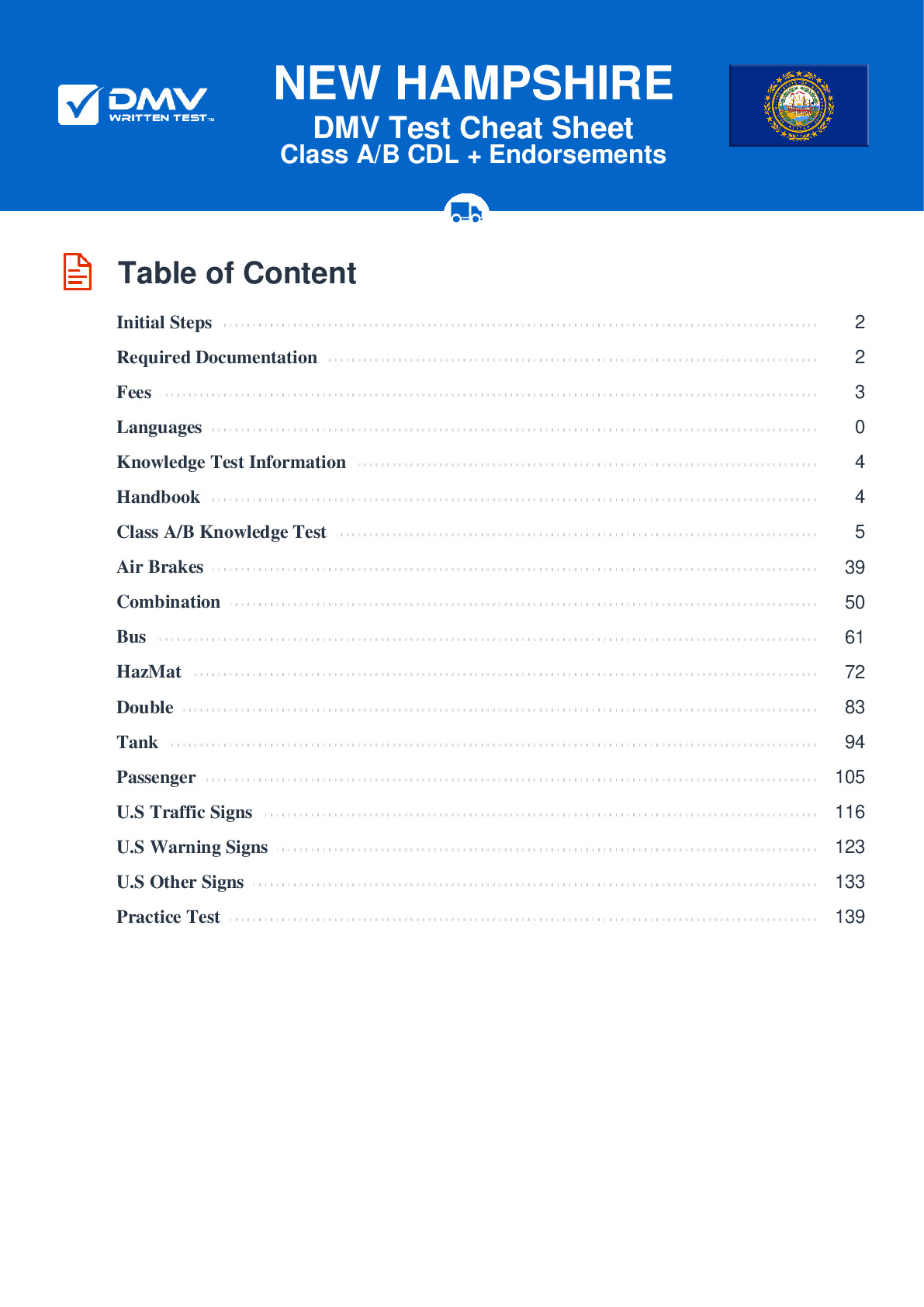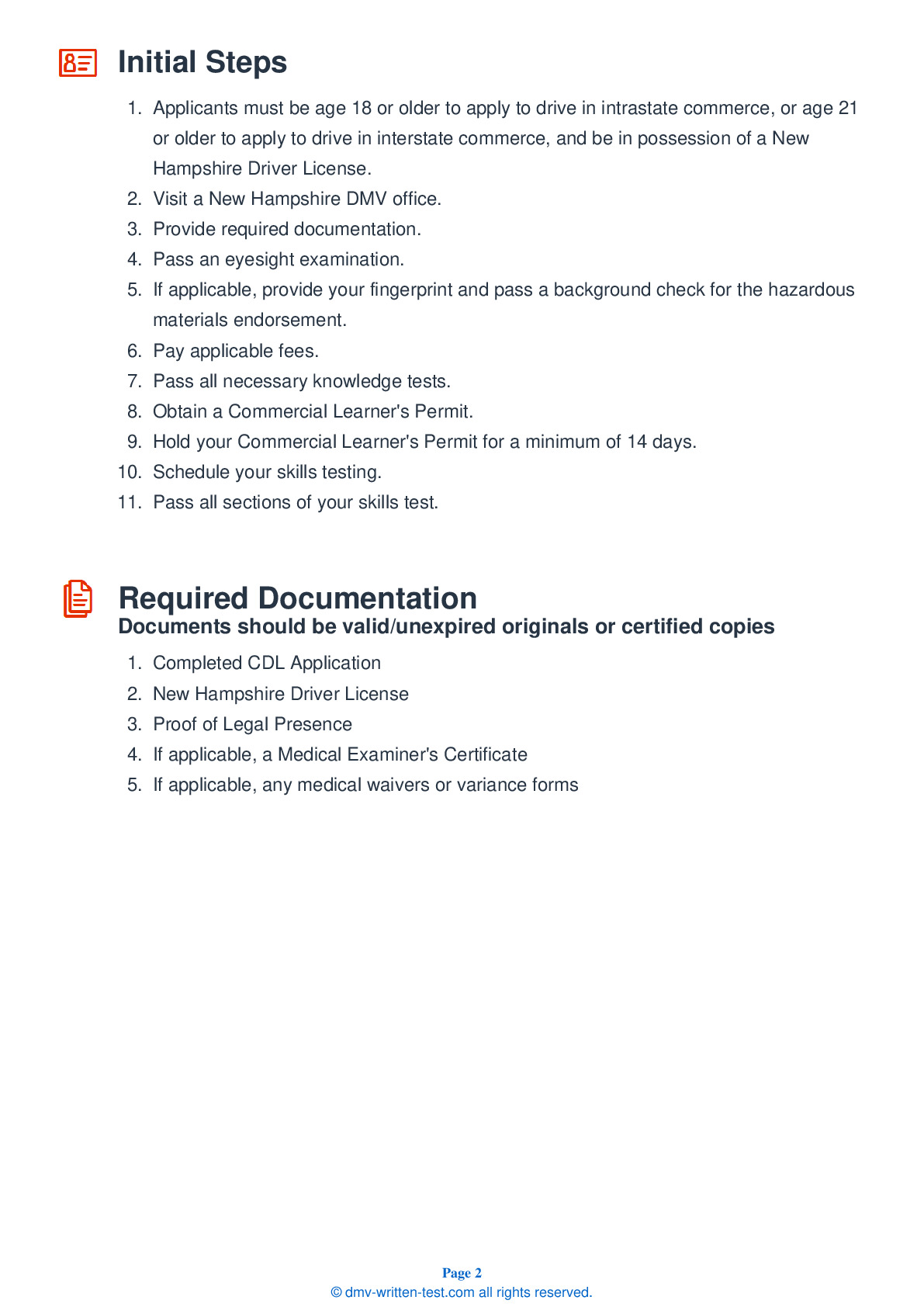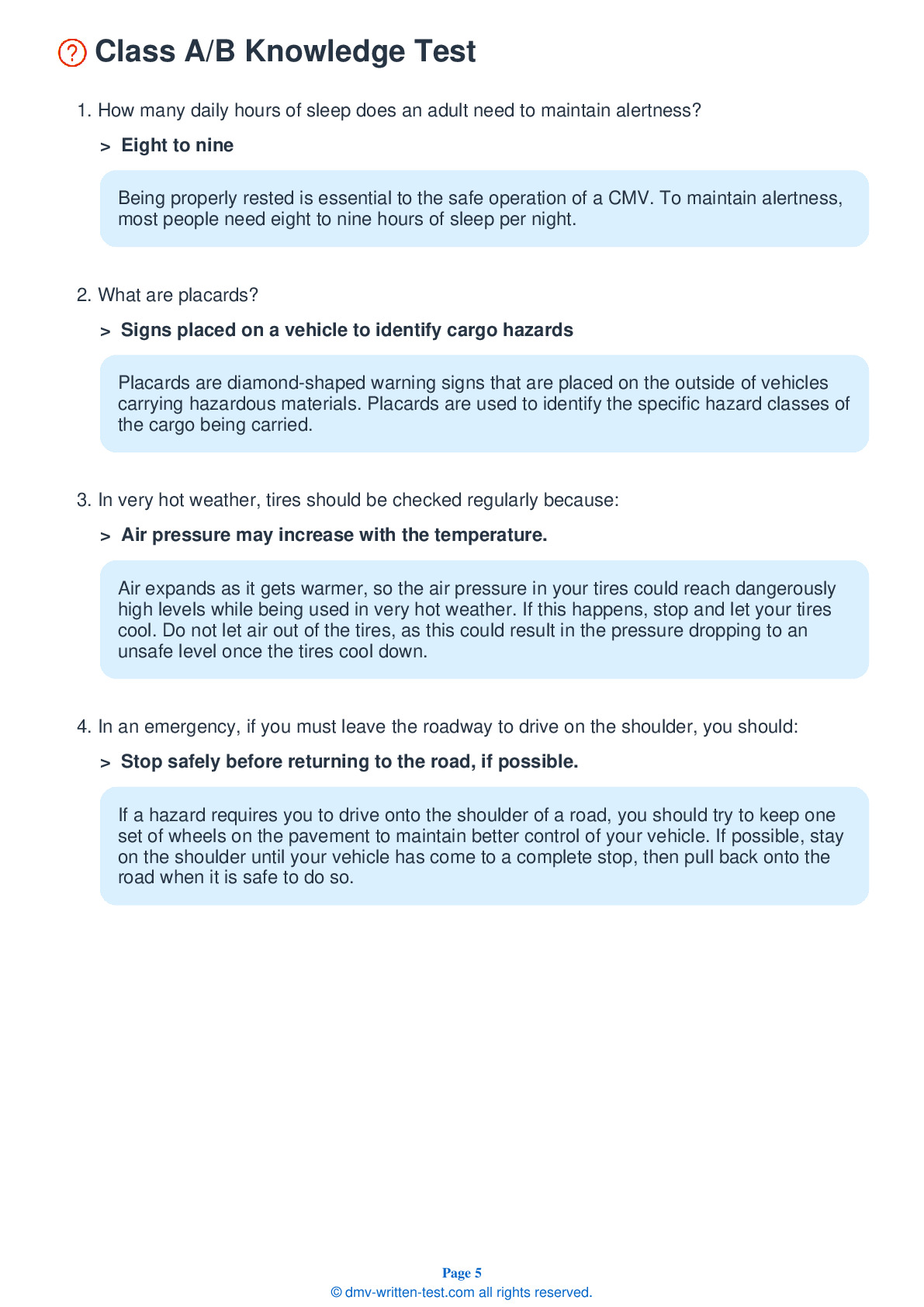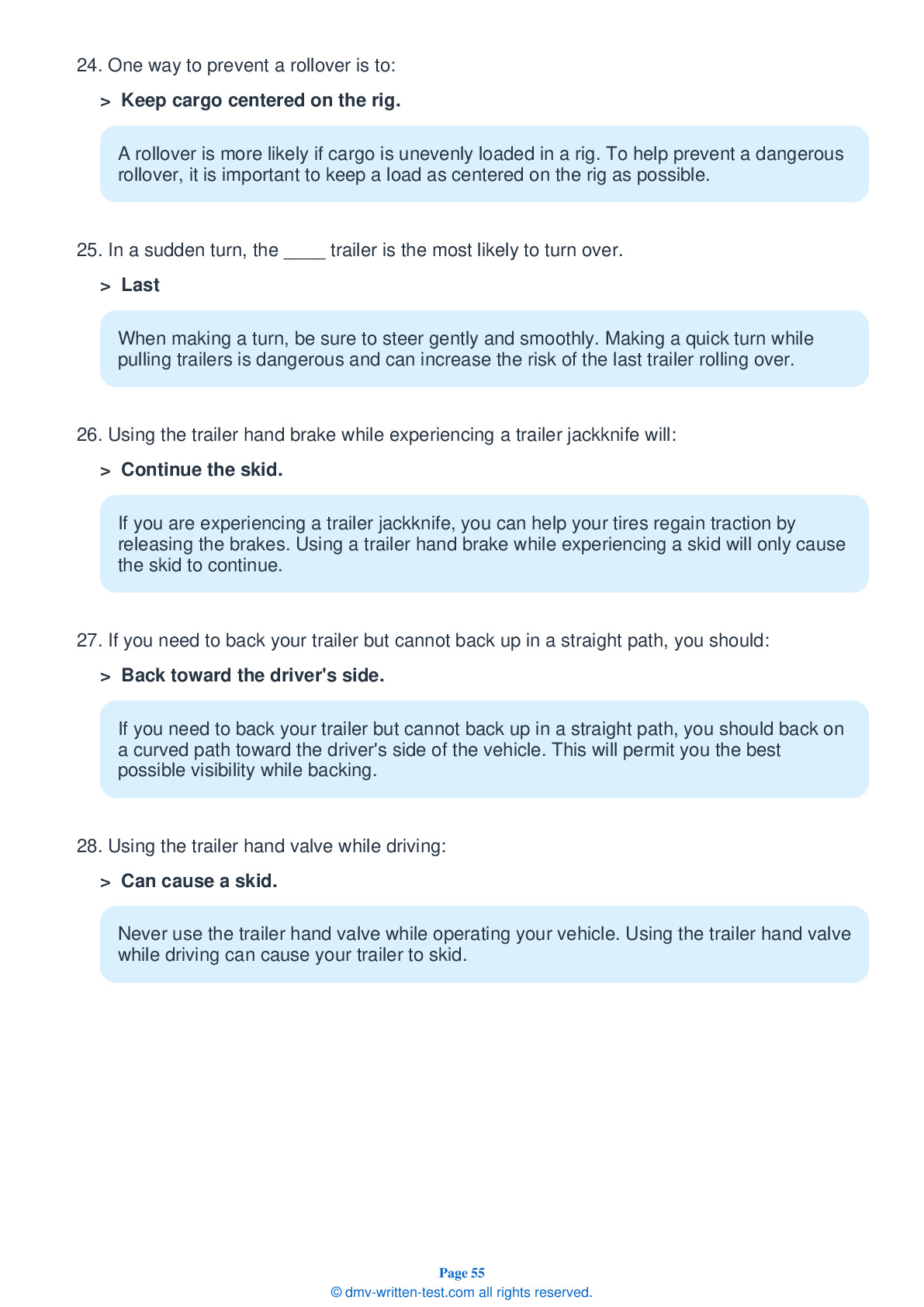Air Brakes
This endorsement is required for driving a vehicle with air brakes. To receive this endorsement, applicants must pass a written test. The test consists of 25 multiple choice questions. Each question has four answer choices. To pass, the applicant must answer at least 20 questions correctly. Test questions come from the New Hampshire CDL Driver’s Guide. Questions come from the chapter covering: Air Brakes. The Air Brakes endorsement may be used with the Class A, B or C CDL.
Number of Question
Passing Score
19. If the safety relief valve in an air brake system is releasing air:
Explanation
The safety relief valve in an air brake system releases air if necessary to prevent pressure in the system from becoming too high. If the valve starts releasing air, there is something wrong. Have a mechanic fix the problem.
20. When a brake pedal is pressed and the S-cam is turned, the S-cam:
Explanation
When a brake pedal is pressed and the S-cam is turned, the S-cam presses the brake shoes against the inside of the brake drum. This causes friction and will cause the vehicle to slow.
21. What does the air compressor governor do?
Explanation
In an air brake system, the air compressor governor controls when the air compressor pumps air into the storage tanks. It stops pumping if the pressure in the tanks becomes too high, and begins pumping if the pressure becomes too low.
22. Front brake limiting valves were intended to:
Explanation
Some older vehicles with air brakes have front brake limiting valves. These valves were intended to reduce the risk of front wheels skidding. However, research has shown that such devices are unnecessary, so they should be left in the "normal" position.
23. If the air pressure warning light comes on, you should:
Explanation
If the air pressure warning light or buzzer comes on while you are driving, you should immediately stop and safely park the vehicle. This warning signal indicates that there is a problem in the air brake system that needs to be fixed.
24. What does ABS do?
Explanation
The purpose of an Anti-Lock Braking System (ABS) is to prevent wheels from locking up during hard applications of the brakes, especially on slippery surfaces.
25. When parked on a flat surface, you should:
Explanation




